1. Anthurium andraeanum (Flamingo Flower)
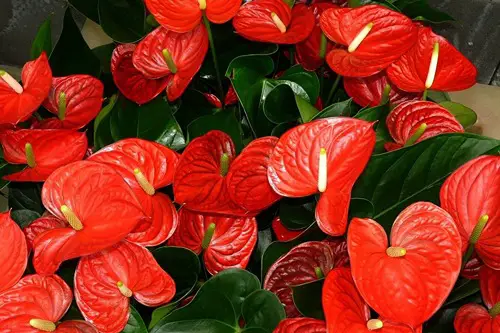
That bright red “flower” isn’t actually a flower—it’s a spathe, and yes, it’s stunning. But behind that glam appearance is a plant that needs high humidity, bright but indirect light, and regular feeding to keep blooming. It’s often bought as a living bouquet, which means people don’t always treat it like a houseplant. Cue the leaf yellowing, no new blooms, and silent judgment.
It’s not impossible to keep alive, but it’s definitely not as easy as its supermarket presence would suggest. Most folks buy it because it looks polished and exotic, perfect for a kitchen counter or guest room. But it’s more demanding than its perky appearance implies. Another high-glam, high-stakes houseplant.
2. Fiddle Leaf Fig (Ficus lyrata)

You saw it in a design magazine next to a mid-century couch and thought, “Yes, that’s the one.” But the fiddle leaf fig is famously finicky about light, humidity, and its general mood. If it gets even slightly cold or you move it too often, it throws a dramatic tantrum and drops its leaves. Most people aren’t buying it for hardiness—they’re buying it for the statement.
What makes it especially impractical is how big and tree-like it becomes without ever really forgiving you for past mistakes. It needs bright, indirect light—no exceptions—and doesn’t like drafts or dry air. Basically, unless your home is a greenhouse with central heating, you’re fighting a losing battle. But man, does it look good in Instagram corners.
3. String of Pearls (Senecio rowleyanus)

This quirky, beaded succulent is a social media darling, often draped photogenically over bookshelves or hanging in macramé planters. But underneath the boho aesthetic is a plant that really wants very little to do with you. It hates overwatering, rots quickly, and requires bright light but not too much heat. Basically, it thrives best in a very narrow set of conditions that don’t always align with your apartment windowsill.
It’s not that you can’t keep it alive—it’s just that it seems to die with so little warning. One day it’s thriving, the next it’s a sad string of mush. But hey, at least it looked great for that one shoot. It’s the plant equivalent of a vintage car: beautiful, high-maintenance, and definitely not your daily driver.
4. Calathea (any variety)
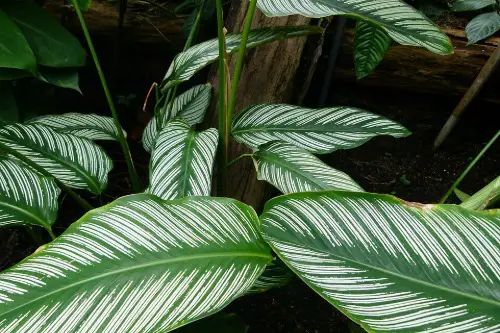
Calatheas are gorgeous, sure, with their painted, pinstriped, or peacock-like leaves that move in rhythm with the day. But they are extremely sensitive to water quality, humidity levels, and sudden drafts—basically, anything short of a rainforest spa. If your tap water has minerals or chlorine, it might crisp up the edges of their leaves. You didn’t buy this plant because you love troubleshooting plant anxiety—you bought it because it’s visually stunning.
And let’s not even get into the brown edges that show up just to shame you. They need distilled water, daily misting, and a humidity level your skin would love but your HVAC cannot provide. If you’ve got a humidifier running just for this plant, you’re in the deep end. You didn’t pick it for its forgiving nature—you picked it for the vibes.
5. Air Plants (Tillandsia)
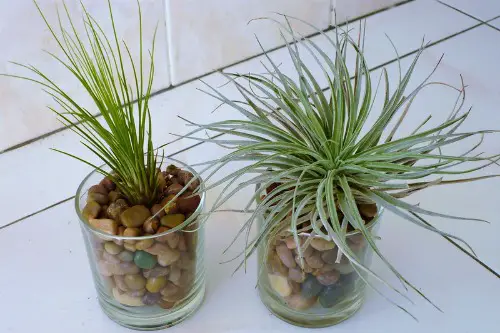
You saw them in a minimalist store hanging in glass orbs and thought, “Low maintenance, perfect!” But the reality is these no-soil wonders need regular soaking, good air circulation, and plenty of bright light. If you forget to soak them weekly—or worse, let them sit in water—they’ll crisp up or rot from the inside out. The paradox is that they look effortless but are actually high-touch.
They also won’t give you much feedback before they die, which is perfect if you enjoy plant-based guilt. People often buy them thinking they’re zero-care decor, but they’re more like tiny orchids with attitude. They don’t live in dirt, sure—but they still want attention. You definitely didn’t buy these for their resilience—you bought them because they look like alien sea creatures and fit inside a lightbulb.
6. Monstera adansonii (Swiss Cheese Vine)
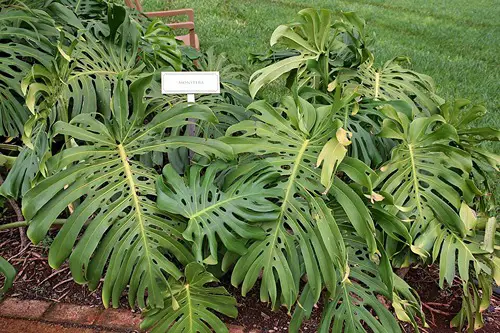
This plant makes any space feel tropical and lush, especially with its Insta-worthy holes and trailing growth. But it’s not as easygoing as its cousin, the Monstera deliciosa. It needs bright, indirect light, regular pruning, and just the right watering balance to avoid root rot or crispy leaves. People often underestimate it because it looks like a fun, playful version of a regular Monstera.
But the truth is, it’s a fast grower that turns leggy and chaotic without support or proper trimming. Miss a few watering cues and it turns limp and sad. You definitely picked this one because it screams “aesthetic plant parent,” not because it was going to thrive in a shady kitchen corner. It’s a plant with the energy of a fashion-forward toddler: adorable, but exhausting.
7. Rex Begonia
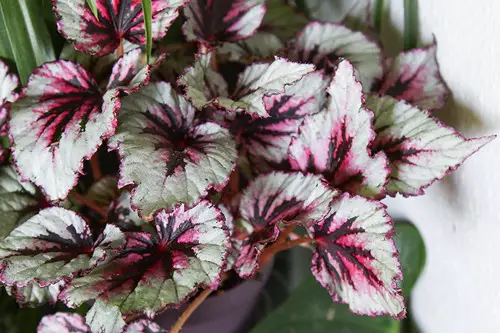
Rex begonias are eye-catching with their spiral leaves and rainbow-like iridescence. But their diva-like temperament makes them a plant that you really have to work for. They hate inconsistent watering, dry air, and even too much light. They’re also prone to powdery mildew and leaf drop if you breathe on them wrong.
Most people bring them home because they look like living art. But their care routine is more like a high-maintenance houseguest than a chill roommate. They’re indoor plants with outdoor plant demands. So unless you’re ready to give daily attention, you definitely picked this one more for the vibes.
8. Maidenhair Fern (Adiantum)
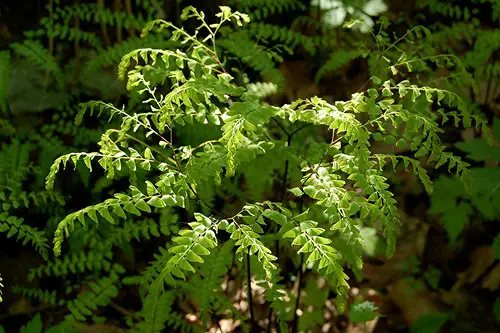
There is no plant that wilts more dramatically or quickly than the maidenhair fern. One missed watering and its delicate fronds collapse like a fainting Victorian lady. It thrives in consistently moist soil, high humidity, and indirect light—basically a terrarium or bathroom. It does not tolerate dry spells, drafts, or even brief neglect.
Still, people bring them home because they’re soft, lacy, and impossibly elegant. They lend a sort of fairy-tale forest vibe to any shelf or windowsill. But unless you’re hovering over it with a mister and a moisture meter, it will rebel. This plant is a mood board, not a survivalist.
9. Fittonia (Nerve Plant)
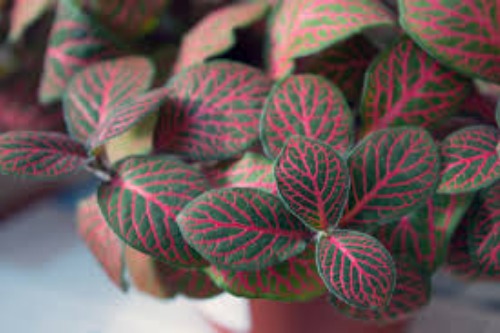
Fittonias are tiny, brightly veined showstoppers that add color and texture to plant arrangements. But don’t let their compact size fool you—they are dramatic queens. When underwatered, they’ll collapse completely, making you think they’ve died. Then they bounce back like nothing happened, only to do it all again next week.
They love humidity and moist soil, but hate being soggy, so good luck striking that balance. Most people buy them thinking they’re cute desk companions, not emotional rollercoasters. Their small size makes them seem easy, but they are not low-maintenance. You definitely picked this one for its striking look, not its chill personality.
10. Zebra Plant (Aphelandra squarrosa)
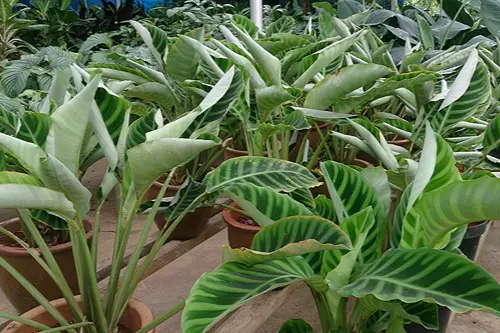
With its bright striped leaves and occasional neon yellow bloom, the zebra plant looks like a tropical souvenir. But it’s one of the more high-maintenance houseplants you can adopt. It requires near-perfect humidity, consistent moisture, and hates both overwatering and underwatering. It also needs lots of indirect light but will scorch if it’s too intense.
Basically, it wants everything just so, and will sulk if it doesn’t get it. People often buy it for its vivid foliage and bold contrast, not realizing they’ve invited a houseplant with trust issues. It’s a classic case of buying a plant for how it looks rather than how it lives. Which is fine—just don’t expect it to stick around without some serious care.
11. Prayer Plant (Maranta leuconeura)
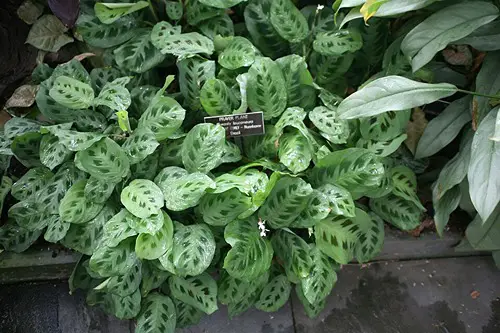
The folding nighttime behavior of prayer plants is mesmerizing, and their bold patterns are a serious design upgrade. But they’re not especially forgiving if your environment isn’t dialed in. They crave humidity, don’t like hard water, and tend to get crispy if things are even slightly too dry. You’ll often see people surprised that such a cute, humble-looking plant is so demanding.
You didn’t bring this home because you wanted to learn about water pH levels. You brought it home because it looked cool and moved, which felt borderline magical. But magic has its price, and this one wants distilled water, misting, and attention. It’s a plant that thrives under surveillance.
12. Peperomia Polybotrya (Raindrop Plant)
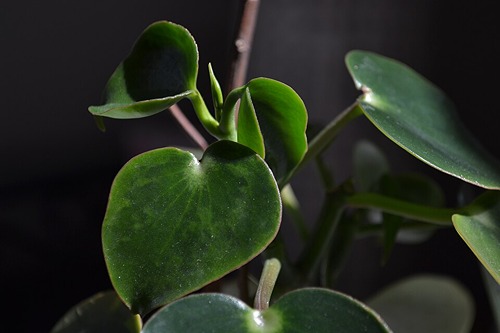
With chubby, glossy, raindrop-shaped leaves, this plant looks like a chill cousin of the pilea—and that’s how it tricks you. While not the absolute hardest to care for, it’s very picky about watering. Too much? Root rot. Too little? Droopy sadness.
It’s often bought for its Instagram-friendly appearance and small footprint on shelves. But it really wants steady care and good drainage, and doesn’t tolerate inconsistency well. People think it’s a succulent (it’s not), so it often gets mismanaged. Another case of buying it for the vibe, not the plant-care compatibility.
13. Croton (Codiaeum variegatum)

Crotons bring the drama with rainbow-colored leaves that almost seem fake. But they’re absolute divas when it comes to care. They need bright light to maintain those colors, warm temperatures, and consistent humidity. Even moving them from one room to another can trigger a leaf drop.
Still, they’re incredibly popular because of their visual impact. People are seduced by the bold hues, not the warning signs. If you’ve lost all but one leaf within a week of bringing it home, you’re not alone. Crotons are the definition of plants bought for their looks—not their ability to roll with the punches.
14. Alocasia Polly (African Mask Plant)
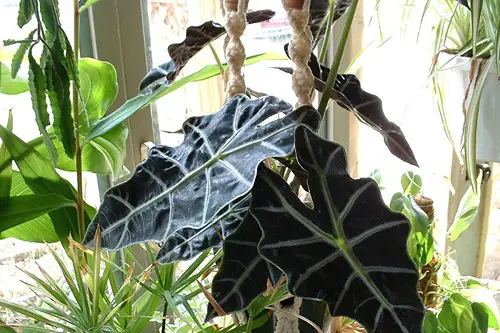
With its dark, dramatic leaves and bold white veins, Alocasia Polly makes any room feel like a designer jungle. But it’s not the plant for a set-it-and-forget-it lifestyle. It’s prone to spider mites, gets fussy if it’s too dry or too cold, and will absolutely go dormant if it feels slightly disrespected. That’s right—this plant will literally stop growing for months if it’s unhappy.
And unlike other plants, it won’t even pretend to be doing okay while it’s mad. You’ll end up staring at a single drooping leaf and wondering what went wrong. You didn’t choose this plant for resilience; you chose it because it looks like it belongs in a futuristic terrarium. Which is great… until the reality of its upkeep sets in.
15. Pilea Peperomioides (Chinese Money Plant)
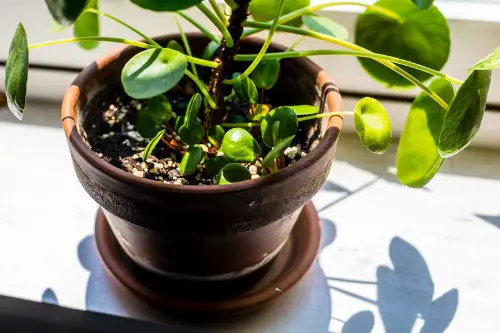
This plant is the plant equivalent of a lifestyle blog—round, glossy leaves that look good from every angle. But it’s deceptively needy. It hates soggy soil, demands a well-lit but not too-bright spot, and needs regular rotation or it’ll get lopsided. And it drops leaves if it’s even slightly unhappy.
Despite its trendy reputation, it can be finicky to propagate and temperamental to move. Most people snag one for the aesthetic—minimalist, Scandi, and oh-so-clean. But they’re surprised when it doesn’t thrive on good intentions alone. It’s a vibe-driven purchase if ever there was one.
This post 15 Plants That Reveal You Bought Them Purely for Vibes, Not Survival was first published on Greenhouse Black.
